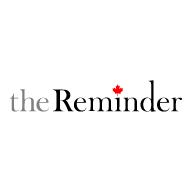COVID-19 cases in the Northern Health Region (NHR) are rising, spurred on by growing cases in Norway House and Pukatawagan, while northern Saskatchewan infections are slowly going down.
The NHR is up to 211 total active cases as of Oct. 6, with over half of those cases now in two northern regions - Norway House and Pukatawagan-Mathias Colomb Cree Nation. Norway House, which has been relatively unscathed by COVID-19 through the first three waves, is now up to 63 active cases according to provincial public health data, with most reported in the last two weeks. The district has only seen 119 COVID-19 cases since the pandemic began, relatively few when compared to the nearby district of Cross Lake-Pimicikamak, where 750 people have gotten sick in total but few recently.
Pukatawagan cases are up to 57 active, with all but one found in the past two weeks. The region was hit hard by COVID-19 last winter, to the point where Canadian Armed Forces personnel landed in the community to provide local health care assistance and outreach.
No cause for the cases has been announced. Neither district has been marked by the province as the site of a community outbreak.
Throughout the rest of northern Manitoba, only three other health districts have double-digit levels of COVID-19 cases - The Pas/OCN/Kelsey with 30, Island Lake with 20 and Cross Lake with 11. Both the Flin Flon/Snow Lake/Cranberry Portage/Sherridon and the Thompson/Mystery Lake district have two active cases each.
In a media briefing Oct. 4, Manitoba chief provincial public health officer Dr. Brent Roussin warned that updated modelling shows the province could be up to over 500 cases a day by mid-December without changes in direction.
"Our fourth wave was more delayed than what early projections had shown, but we're certainly on the trajectory of the severe outcome, severe trajectory right now. We're in a trajectory right now that could take us to a place where we'll see quite a significant amount of strain on our health care system, unless we change it,” Roussin said.
Manitoba modelling from August showed three scenarios - one with tight restrictions and COVID-19 suppression tactics called the “controlled” model, a limited model labelled as “severe” and an “extreme” model showing a worst case scenario.
"What we do know is the provincial rate is going up, because we're seeing increasing transmission," said Roussin during the Oct. 4 update.
“The most significant transmission right now is occurring in the Southern Health region, which is also significantly contributing to our ICU admissions."
Saskatchewan
Cases remain high in Manitoba's western neighbour, including in northern areas, but numbers are slowly declining.
There are now, as of Oct. 6, 4,313 people who have active COVID-19 cases in Saskatchewan. Over a third of those cases are located in northern communities, including 60 active COVID-19 cases in the far north east 2 health zone according to provincial health information. Despite that, overall case counts are lower than recent weeks, including in the far north east 2 zone, where active case data has shown over a hundred people ill at any time in the zone.
Creighton, Denare Beach and Flin Flon, Sask. have a total of six active cases according to the most recent data from the Saskatchewan Health Authority (SHA).
Pelican Narrows has 25 active cases of COVID-19 according to the Angelique Canada Health Centre, while Deschambault Lake’s Jonah Sewap Memorial Health Centre is down to only six active cases as of Oct. 6. Both communities have seen more recoveries than new cases in recent days - in Pelican Narrows, where 12 more people tested positive for COVID-19 Oct. 5, 25 others had recovered from the disease.




